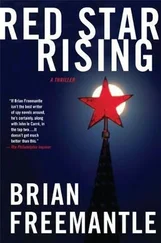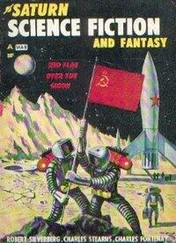The research institute in Adlershof was just one in a burgeoning catalog of places of scientific interest in the Berlin area. There was the Askania factory nearby, the Siemens plant in Spandau, a design bureau in Mariendorf, another Askania facility in Friedenau, a Telefunken factory in Zehlendorf, and the list went on. Each of these sites held its own wonders: magnetron tubes with a pulse power of up to one hundred kilowatts, accelerometer calibrators, polarized relays, transverse and longitudinal acceleration integrators—precision instruments that the Russians had only dreamed of. It was such sophisticated components that made the world of difference between the giant, guided V-2 and the crude little directionless Katyushkas the Soviet Union had built during the war. And Joseph Stalin wanted that technological edge.
German precision engineering was now the official property of the Soviet government. The specialists back home were anxiously awaiting the war trophies. Epic bureaucratic battles would later erupt in Moscow over who got the booty. Fortunately for Chertok, his initial role in this national technology transfer was restricted to inventorying, packing, and shipping the loot. Others would have to fight over it. At times he felt like a wide-eyed child that had been handed the keys to the Detsky Mir toy store across from NKVD headquarters in Dzerzhinski Square. “Oh, this German love for details and this exactness, which has ingrained such top-notch work into the culture,” he declared in an April 29 diary entry. “I am envious.”
Anything was for the taking—exquisite Khulman drafting tables, vibration benches, entire photochemical laboratories. And what brand names: Philips, Rohde & Schwartz, Lorentz, Hartmann-Braun, Haskle, AEG, Karl Zeiss. Chertok had read about these famous firms in the Western journals that were selectively circulated at NII-1, but until now they had been as familiar and unavailable as a Lana Turner pinup.
Taking it all seemed only fair. “We have every right to this,” Armaments Minister Dmitri Ustinov explained. “We paid for it with a great deal of blood.” After all, it was the Germans who had violated the 1939 Molotov-Ribbentrop nonaggression pact, who had attacked unprovoked two years later and slaughtered millions of Soviet citizens. In Russia, they lacked everything, while Germany had an overabundance of everything. “The thing that every laboratory needs the most and is in the shortest supply,” Chertok continued in his diary, “is the Siemens four mirror oscillograph. In Moscow, at NII-1, we only had one for the entire institute. And these Germans had so many!”
Surveying the marvels of German science, Chertok could not help being swept up in the moment, pushing aside the fact that the Nazis had murdered his Jewish relatives in Auschwitz and ravaged his homeland. “No,” he wrote on April 30, “we no longer felt the hatred or thirst for revenge that had boiled in each of us earlier. Now it was even a pity to break open these high-quality steel laboratory doors and to entrust these diligent but not very careful soldiers with packing priceless precision instruments. But faster, faster—all of Berlin is waiting for us! I am stepping over the body of a young panzerfaust operator that has not yet been cleared away. I am on my way to open the next safe.”
• • •
Five hundred miles west of Berlin, ensconced in the Parisian luxury of the Plaza Athénée Hotel, Colonel Holger N. Toftoy had been issued almost the same instructions as Boris Chertok. Only his scavenging list consisted of one item: the V-2.
Like Moscow, Washington wanted the rocket. The U.S. Army had quickly grasped that the V-2 represented a new type of weapon that could revolutionize warfare. The rocket had demonstrated that it could deliver significant explosive charges over long distances with relative accuracy. It could be mass-produced (Hitler had ordered twelve thousand units made) and easily transported. Its potential was obvious. It was even possible that guided missiles might someday replace artillery and make long-range bombers obsolete. The U.S. brass was not about to pass up the chance to grab this promising new weapon, as Toftoy’s boss, Major General Hugh Knerr, made clear in a 1945 memo. “Occupation of German scientific and industrial establishments has revealed the fact that we have been alarmingly backward in many fields of research,” Knerr wrote. “If we do not take this opportunity to seize the apparatus and the brains that developed it… we will remain years behind. Pride and face-saving have no place in national insurance.” Knerr’s boss, General Dwight D. Eisenhower, put it even more starkly in a cable to Washington. “The thinking of the scientific directors of this group is 25 years ahead of U.S. Recommend that 100 of the very best men of this [V-2] organization be evacuated to U.S immediately.”
Toftoy’s marching orders were equally terse. “Get enough V-2 components to make 100 complete rounds,” he instructed in the spare tone preferred by the military. “Ship to US.” Attached to the directive was a “black list” of names headed by Wernher von Braun, the boy wonder who at the age of twenty-four had been put in charge of what would become the Third Reich’s most important military project. It sounded so simple: round up one hundred rockets and one hundred men. Little did Toftoy know that the assignment would preoccupy the next ten years of his life.
Unlike Chertok, “Ludy” Toftoy (as he was oddly nicknamed by his classmates at West Point) was a career military officer, a graduate of numerous advanced programs at the Command and General Staff School, the Ordnance School, and the Army-Navy Staff College. He was a crack marksman, a recipient of the Knox artillery trophy and the Distinguished Pistol Shot medal. Slim and square-jawed, Toftoy was the embodiment of the American soldiering spirit. He had brains and brawn, and an innate talent for organization, which he displayed amply and eagerly from his earliest days at West Point, where he was chairman of the Ring Committee, designer of the 1926 Class Crest, president of the Dialectical Society, art editor of the student newspaper, and a four-year letterman on the pistol team. The West Point yearbook, the Howitzer, summed up his busy stay on the banks of the Hudson: “It is no exaggeration to say that almost everything that [the class of] ’26 has done during the past two years has felt the guiding hand of little Ludy.”
Little Ludy, now grown up and newly promoted to chief of Ordnance Technical Intelligence in the European theater, was for once having difficulty carrying out his orders. Though the V-2s he was supposed to find had been mostly fired from mobile launch sites in Holland and France, there were no rockets in either country. The missiles, apparently, had not been designed for lengthy storage periods, and firing batteries like the 2./485 that had launched the first strike against London tended to run through the German rocket supply faster than factories could replenish it. So Toftoy had to go to the source, which was problematic since the First Belorussian Red Army Group had overrun the V-2’s original production facility, a sandy islet in the Baltic Sea called Peenemünde. Fortunately, Peenemünde was of limited value to the Soviets because the SS had moved the V-2 assembly lines to a secret location after a series of Allied air raids in August 1943.
Despite Toftoy’s numerous and increasingly frantic entreaties, army intelligence still hadn’t located the new facility. It could be anywhere in Germany or Austria. Worse, it could be in Soviet-occupied territory, like Peenemünde, in which case Toftoy would never be able to carry out his mission. As Ludy contemplated the unpleasant prospect of a strikeout blemishing his stellar service record, a message clattered off the Teletype machine at G-2 army intelligence headquarters in Frankfurt. The 104th “Timberwolf” Infantry Division had apparently stumbled across something horrible in the Harz Mountains in central Germany.
Читать дальше












